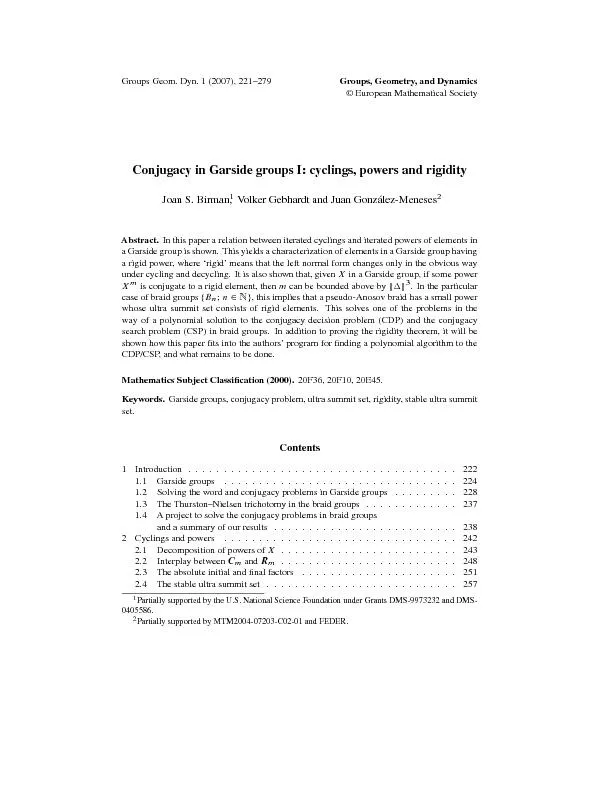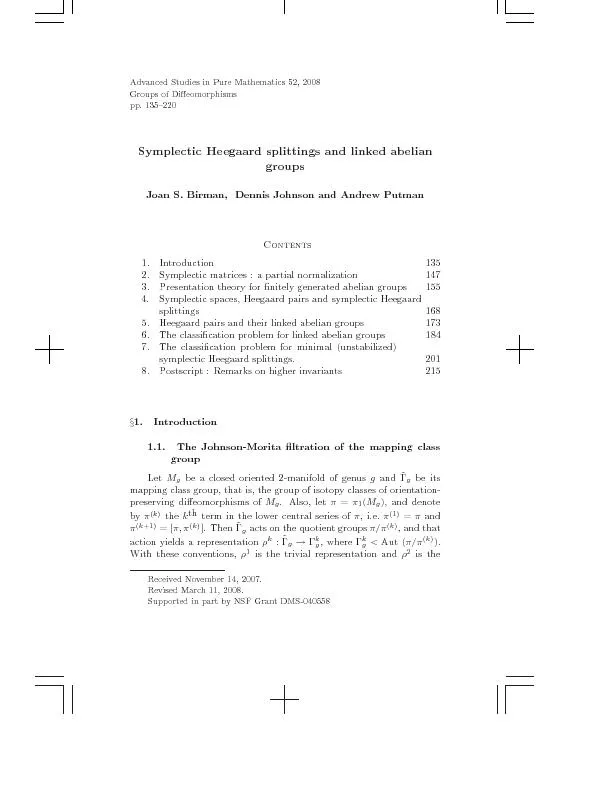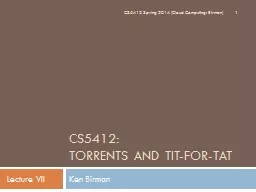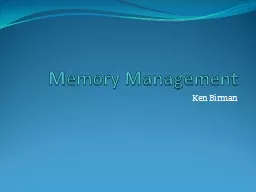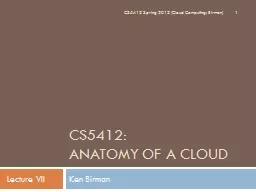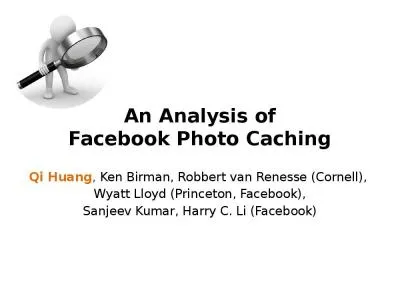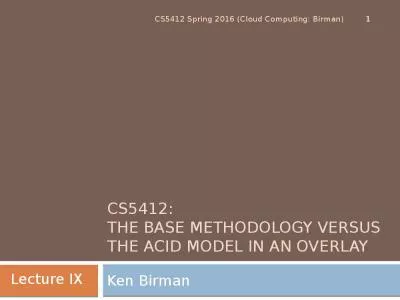PPT-Ken Birman
Author : pamella-moone | Published Date : 2017-06-09
Based heavily on a slide set by Colin Ponce Rethinking Operating System Designs for a Multicore World Multicore computer A computer with more than one CPU 19601990
Presentation Embed Code
Download Presentation
Download Presentation The PPT/PDF document "Ken Birman" is the property of its rightful owner. Permission is granted to download and print the materials on this website for personal, non-commercial use only, and to display it on your personal computer provided you do not modify the materials and that you retain all copyright notices contained in the materials. By downloading content from our website, you accept the terms of this agreement.
Ken Birman: Transcript
Download Rules Of Document
"Ken Birman"The content belongs to its owner. You may download and print it for personal use, without modification, and keep all copyright notices. By downloading, you agree to these terms.
Related Documents


